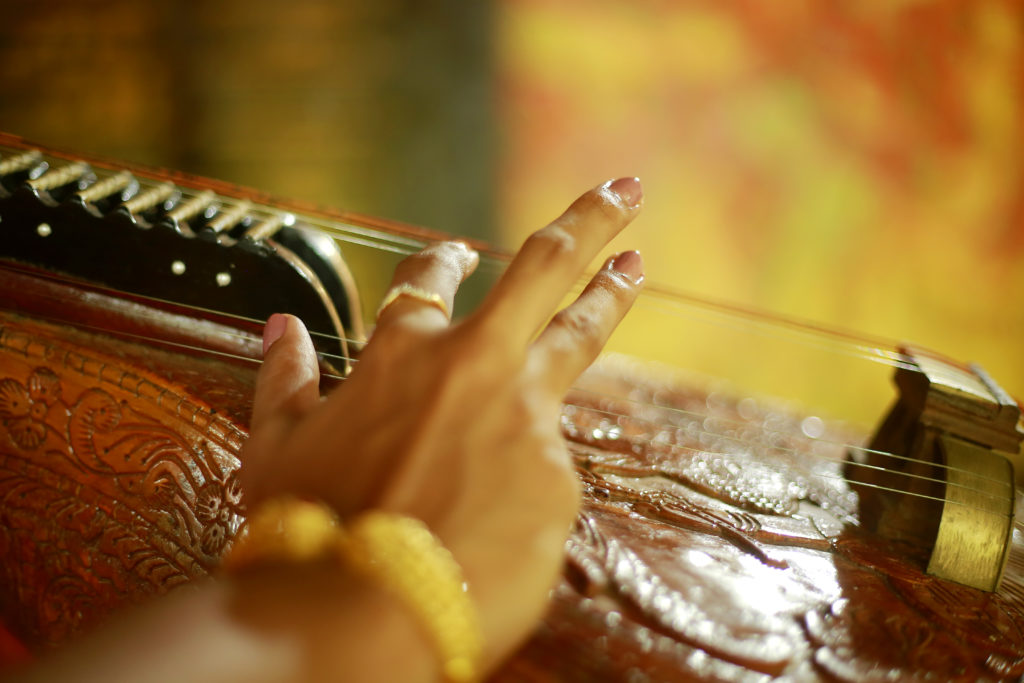Saraswati Veena
The recorded history of Saraswati Veena, the fretted seven-stringed plucked classical musical instrument, dates back to 15 century BC. This ancient south Indian/Carnatic instrument has a uniquely complex mechanical system.
In 1921, Indian physicist and Nobel laureate Sir C.V. Raman published ‘On some Indian stringed instruments’ analyses the geometric significance and effect of Veena’s bridge on the radiation of sound. The instrument is the epitome of a structural-acoustic coupled problem.
The national instrument of India, is unique not only in its acoustic properties but also in its structure.
About 1.2 meters in length, it’s design comprises of a fretboard with 24 frets made of bee wax divided using tiny rod shaped brass dividers, primary and secondary resonators, seven strings, their pegs, curved dragon head, and bridge.
Out of the seven strings, four passes over the fretboard, and they are the main strings. The remaining three strings (rhythm strings) are placed along the side that’s closer to the player. Five of these strings are made of steel, and the remaining using brass. Each of these sevens strings has specific lengths and gauges.
Human vertebral column
The vertebral column is part of the human axial skeleton, which comprises 24 presacral vertebrae. Towards the base there is sacrococcyx, a single curved bone. The size of the vertebral bodies progressively increases as we move caudally. The spinal cord is enclosed within the spinal space that’s housed within these vertebrae.

The analogy
One of the earliest literary mentions of the resemblance of the Saraswati Veena to the human body is found in two Kannada language books published in 1936 by Yeda Torey Subramanya Sarma, namely ‘Sandhya vandaneeya tatvartha’ and ‘Veda Prakashike’.
The anatomical similarity between the whole spine sagittal Computerised Tomography (CT) image and the sagittal view of Saraswati Veena are uncanny! There is something peculiar about the 24 frets of Saraswati Veena. The interfret distance increases towards the dragon head.
What’s thought-provoking is that the 24 human presacral vertebrae size too, like the frets of the Saraswati Veena, increase as it goes towards the sacrococcyx/tail end. There exists a curve at both sacrococcyx and the dragonhead of the instrument.
The Veena strings that run parallel over the fretboard are close to how the spinal cord is enclosed within the vertebral column. This way, primary resonator is mentioned in literature as the brain of a Veena.
The academic interpretation of this analogy would perhaps be intriguing. The clinical implications of the resemblance in human anatomy and the structure of Saraswati Veena have not yet been explored. Additionally, the acoustic timbre of the instrument, as commented by Sir C.V. Raman in his paper, might also be read together with the structural similarity. This might be a fascinating avenue to explore in the future.








